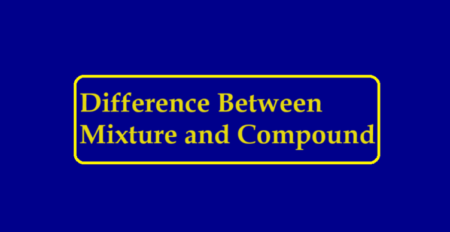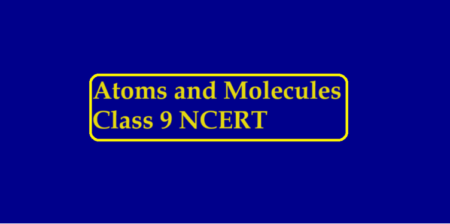Matter in Our Surroundings Notes Class 9
The post Matter in Our Surroundings Notes Class 9 involve following topics:
- Introduction
- Composition of Matter
- Matter and Properties of Matter
- Diffusion
- States of Matter
- Rigidity & Fluidity
- Interconversion of the state of Matter
- Effect of change of temperature & pressure
- Latent Heat
- Latent heat of vaporization and Fusion
- Sublimation, Evaporation, Cooling Effect
INTRODUCTION:
◊ Everything in this universe is made of materials that scientists named‘ matter’.
◊ A pencil, a pen, a book, the food we eat, the clothes we wear, the walls of our houses, doors– everything around is made up of matter. But the only important question is What is the matter?
◊ Matter is anything that occupies space and has mass.
◊ “Matter is used to cover all the substances and the materials from which the universe is made.
PROPERTIES OF MATTER:
All matter consists of small particles of matter. These particles have some common characteristics. These characteristics are laid down in a theory called the Kinetic Theory of Matter.
◊ All matter comprises small particles.
◊ These particles have space in between them.
◊ The particles are continuously moving.
◊ The particles attract each other.
PARTICLES OF MATTER HAVE SPACE BETWEEN THEM
◊ The matter is made up of small particles.
◊ These particles have small spaces between them.
◊ These spaces are invisible to the naked eye.
◊ But particles of other matter can get between these spaces without an increase in volume.
PARTICLES OF MATTER ARE CONTINUOUSLY MOVING:
◊ Particles present in matter move continuously.
◊ The particles of matter show three types of motion.
⇒ Translatory Motion – When particles move in straight lines, changing direction without loss of energy on colliding with another particle or the wall of the container, the motion is called Translatory motion. Translatory motion is the maximum in gases and the least in solids when compared to liquids.
⇒ Rotational Motion – When particles move around their own axis, the motion is called rotational motion. This motion is similar to the rotation of the earth around its axis. The rotational motion will be high in gases and in liquids.
⇒ Vibrational Motion – When particles have a to and fro motion about a mean position, the motion is called Vibrational motion. This motion is maximum in solids as the particles are held in a rigid structure.
PARTICLES OF MATTER ATTRACT EACH OTHER:
◊ The force with which they attract each other varies from matter to matter.
◊ In some kinds of matter (waste paper, matchstick) the force is small (as we can tear or break them easily).
◊ In other kinds of matter (iron nails) the force is large (as we cannot break the nail easily).
Matter in Our Surroundings Notes Class 9
DIFFUSION:
♦ Diffusion is the movement of a substance from a higher concentration area to a lower concentration area. Any material, solid, liquid, or gas can diffuse. The medium in which the diffusion occurs can be of three physical states.
♦ The diffusion of one substance into another substance goes on until a uniform mixture is formed. Let us take one example of it.
♦ Diffusion is a property of matter which is based on the motion of its particles.
♦ Diffusion is the fastest in gases because the particles in gases move very rapidly. The diffusion is slowest in solids because the particles in solids do not move much.
♦ The rate of diffusion increases on increasing the temperature of the diffusing substance. This is because when the temperature of a substance is increased by heating, its particles gain kinetic energy and move more rapidly and this increase in the speed of the particles of a substance increases the rate of diffusion.

FACTORS THAT AFFECT THE RATE OF DIFFUSION:
♦Mass of the Particle: The rate of diffusion depends on the mass of the matter. Large particles move at a slower pace, resulting in a slower rate of diffusion. Lighter particles will diffuse at a faster rate. The movement of particles determines the speed of diffusion.
♦Temperature: Particles move due to inbuilt kinetic energy. With the rise in temperature, the kinetic energy gets boosted. As the movement of particles increases, the process of diffusion increases.
⇒ Diffusion in gases
Diffusion in gases is very fast. This is because the particles in gases move very quickly in all directions.
Example. When we light an incense stick (agarbatti) in a corner of our room, its fragrance spreads in the whole room very quickly. The fragrance of burning incense sticks spreads all around due to the diffusion of its smoke into the air.
Example. When someone opens a bottle of perfume in one corner of a room, its smell spreads in the whole room quickly. The smell of perfume spreads due to the diffusion of perfume vapours into the air.
⇒ Diffusion in liquids
Diffusion in liquids is slower than that in gases. This is because the particles in liquids move slower as compared to the particles in gases.
Example. The spreading of the purple colour of potassium permanganate into the water, on its own, is due to the diffusion of potassium permanganate particles into the water
The rate of diffusion in liquids is much faster than that in solids because the particles in a liquid move much more freely, and have greater spaces between them as compared to particles in solids.
⇒ Diffusion in solids
Diffusion in solids is a very, very slow process.
Example. If we write something on a blackboard and leave it uncleaned for a considerable period of time we will find that it becomes quite difficult to clean the blackboard afterwards. This is due to the fact that some of the particles of chalk have diffused into the surface of the blackboard.
Matter in Our Surroundings Notes Class 9
STATES OF MATTER:
◊ Solids have a definite shape and volume. They are harder than liquids and gases.
◊ Liquids have a definite volume but no definite shape. They take the shape of the container in which they are kept.
◊ Gases have no definite shape or volume. They occupy the entire space available to them and take the shape of the container in which they are stored.
◊ The plasma state is a fused and ionic state of matter that is present at very high temperatures (like the core of the sun, and stars). The fused ionic mass is neutral as it consists of positive ions and a pool of electrons. Approximately 99% of the universe is a fused ionic mass.

| S.No. | Solid | Liquid | Gas |
| 1. | Solids have fixed shape and definite volume | Liquids have fixed volume but no definite shape. | Gases have no fixed volume and shape. |
| 2. | Solids have high density | Liquids have high density but less than solids. | Gases have low density. |
| 3. | Solids show only slight expansion on heating. | Liquids show slight expansion on heating but more than solids. | Gases expand considerably on heating. |
| 4. | They have slight or no compressibility. | They have slight compressibility but more than solids. | They have high compressibility. |
| 5. | Solids do not flow. | Liquids generally flow easily. | Gases flow freely. |
| 6. | They have their melting and boiling points above room temperature. | They have their melting point below room temperature. | They have their melting and boiling points both below room temperature. |
| 7. | Intermolecular forces are very strong and constituent particles are closely packed. | Intermolecular forces are strong enough to keep the particles together but not strong enough to keep them in fixed positions. | Intermolecular forces are very weak and the particles are free to move. |
Matter in Our Surroundings Notes Class 9
RIGID AND FLUID:
♦Rigid means ‘unbending’ or ‘inflexible’. A stone is rigid because it is unbending or inflexible. Fluid means ‘a material which can flow easily and requires a vessel (or container) to keep it.
♦ A solid is a rigid form of matter. Due to their rigidity, solids have a tendency to maintain their shape when subjected to outside force. Thus, the main identifying characteristic of solids is their rigidity. Solids do not require a container to keep them. A brick and a log of wood are two common solids.
♦A liquid is a fluid form of matter which occupies the lower part of the container. Being fluids, liquids require a container to keep them. A liquid has a well-defined surface, so a liquid can be kept in an open container. The liquid will not escape from the open container by itself. Water and milk are two common liquids around us.
♦ A gas is a fluid form of matter which fills the whole container in which it is kept. Being fluids, gases also require a container to keep them. A gas does not have a free surface, so gas has to be kept in a closed container. Gas will escape if kept in an open container. This is why gases are usually kept in air-tight gas cylinders. For example, cooking gas (LPG) is kept in air-tight metal cylinders. From this discussion, we conclude that both, liquids and gases are known as fluids. The characteristic of liquids and gases ‘flowing’ easily is called ‘fluidity’. Due to fluidity, liquids and gases change their shapes readily when subjected to outside force.
INTERCONVERSION OF THE STATE OF MATTER:
Changing temperature, pressure, or both can change matter from one physical state to another.
Changing a solid to a liquid is called Melting.
Changing a liquid to a solid is called Solidification.
Changing a liquid to gas is called Vaporization.
Changing a gas to liquid is called Condensation.
Changing a solid to gas directly is called Sublimation.
Note: While pressure will not have an effect to change the physical state of a solid but increasing pressure in a gas can bring the particles closer together so as to liquefy the gas. Decreasing pressure over the surface of a liquid helps in vaporizing a liquid.

CHANGE OF STATE OF MATTER DUE TO EFFECT OF TEMPERATURE:
We are already aware of the fact that the kinetic energy of the particles of matter increases with the increase in temperature. Due to this increase in kinetic energy, the particles start to vibrate with greater speed. The energy provided by the application of heat breaks the force of attraction between the particles and as a result, the particles leave their respective position and start moving freely.
A phase is reached where at a certain temperature solid gets converted to liquid. This temperature at which solid melts and converts into liquid at atmospheric pressure are termed as the melting point.
Particles of water possess greater kinetic energy at 0oC. With the application of more heat, the particles of water start moving faster. At a specific temperature, the particles acquire enough energy to break free from the forces of attraction to each other. At this temperature, the liquid starts changing into gas. This temperature at which a liquid starts boiling and starts converting to gas at the atmospheric pressure is called the boiling point.

Matter in Our Surroundings Notes Class 9
EFFECT OF CHANGE IN PRESSURE ON THE STATE OF MATTER:
♦ Matter consists of small particles separated by small distances.
♦ In the solid state, the inter-particle distances are very small.
♦ In the liquid state, the inter particle’s distances are a little more than in solids.
♦ In the gaseous state, the interparticle distances are the largest when compared to liquids or solids.
♦ It can thus be seen that when pressure is exerted on the matter, the effect of the pressure on solids will be negligible as the particles are very close together.
♦ The effect of pressure in liquids will be small.
♦ The effect of pressure on gases will be the largest as the inter-particle distances are large.
♦ Thus, whenever pressure is exerted on gases, the particles move closer together.
♦ As the particles move closer together, the attractive forces between the particles increase.
♦ This increase in attractive forces helps in the change of state of the gas. If the pressure exerted is sufficiently large the attractive forces increase to such an extent that the physical state changes from gaseous to liquid.
♦ The reverse can be expected to happen if the pressure on a gas is decreased.
LATENT HEAT:
Definition: The heat energy which has to be supplied to change the state of a substance is called its latent heat.
♦ Latent heat does not raise the temperature but latent heat has always to be supplied to change the state of a substance. The word ‘latent’ means ‘hidden’
♦ Every substance has some forces of attraction between its particles that hold them together. Now, if a substance has to change its state, then it is necessary to break these forces of attraction between its particles. The latent heat does not increase the kinetic energy of the particles of the substance, and the temperature of a substance does not rise during the change of state.
⇒ Latent heat is of two types
♦ Latent heat of fusion: The heat required to convert a solid into a liquid state is called the latent heat of fusion. In other words ‘The latent heat of fusion of a solid is the quantity of heat in joules required to convert 1 kilogram of the solid to liquid, without any change in temperature.
Example. The latent heat of fusion of ice = 3.34 × 105 J/kg
♦ Latent heat of vaporization: The heat required to convert a liquid into the vapor state is called the latent heat of vaporization. The other words ‘The latent heat of vaporization of a liquid is the quantity of heat in joules required to convert 1 kilogram of the liquid to vapor or gas, without any change in temperature.
Example: Latent heat of vaporization of water = 22.5 × 105 J/kg.
Sublimation:
Definition: The changing of a solid directly into vapours on heating, and of vapours into solid on cooling, is known as sublimation.
♦ Sublimation can be represented as:

♦ The solid substance which undergoes sublimation is said to be ‘sublime’. the solid obtained by cooling the vapours of the solid is called a ‘sublimate’.
Example. When solid ammonium chloride is heated, it directly changes into ammonium chloride vapour. And when hot Ammonium chloride vapour is cooled, it directly changes into solid ammonium chloride. Ammonium chloride, Iodine, Camphor, Naphthalene, and Anthracene.
Evaporation:
Defination : The process of change of a liquid into vapour at any temperature below its boiling point is called evaporation.
⇒ Factors affecting evaporation: –
♦ Temperature: The rate of evaporation increase with an increase in temperature. This is because with the increase in temperature more particles get enough kinetic energy to go into the vapour state.
Example. Drying of clothes takes place more rapidly in summer than in winter
♦ Surface Area: The rate of evaporation increases on increasing the surface area of the liquid
Example. If the same liquid is kept in a test tube and in a china dish, then the liquid kept in the china dish will evaporate more rapidly. Because more of its surface area is exposed to air.
♦ Humidity: Humidity is the amount of water vapour present in the air. The air around us cannot hold more than a definite quantity of water vapour at a given temperature. If the amount of water in the air is already large i.e., humidity is more, the rate of evaporation decreases. Thus, the rate of evaporation increases with a decrease in the humidity in the atmosphere.
Example. Drying clothes on a humid day.
♦ Wind speed: The rate of evaporation also increases with an increase in the speed of the wind. This is because, with an increase in the speed of the wind, the particles of water vapour move away with the wind resulting decrease in the amount of vapour in the atmosphere.
Example. Clothes dry faster on a windy day.
Matter in Our Surroundings Notes Class 9



